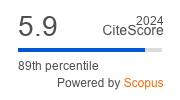Article | Open Access
Digital Media Platforms and the Use of TV Content: Binge Watching and Video-on-Demand in Germany
| Views: | 30222 | | | Downloads: | 23611 |
Abstract: The advancing digitalization and media convergence demands TV broadcasting companies to adjust their content to various platforms and distribution channels. The internet, as convergent carrier medium, is increasingly taking on a central role for additional media. Classical linear TV is still important, but for some audiences it has been developing from a primary medium to a secondary medium. Owing to the growing melding of classical-linear TV contents with online offerings (e.g. video-on-demand platforms or Web–TV), a great dynamic can be seen which has triggered numerous discussions about the future of TV for some time now. This article will summarize the results of two different audience studies. Film and television shows are meanwhile distributed online via Video-on-Demand platforms such as Netflix or Amazon Prime Video. The first audience study has dealt with the use of VoD-platforms in Germany investigating user rituals, user motivation to watch films and TV shows on these platforms, and the meaning of VoD in everyday life. Most of the participants in this study reported that they mainly watch TV drama series at Netflix or Amazon Prime. Therefore, the second audience study focused the online use of television drama series of individuals and couples elaborating the phenomenon of binge watching. In relating the audience practice to the new structures of the television market the article will shed light on the future of television.
Keywords: audiences; binge watching; convergence; digitalization; television, television culture; television series; video-on-demand
Published:
© Lothar Mikos. This is an open access article distributed under the terms of the Creative Commons Attribution 4.0 license (http://creativecommons.org/licenses/by/4.0), which permits any use, distribution, and reproduction of the work without further permission provided the original author(s) and source are credited.


